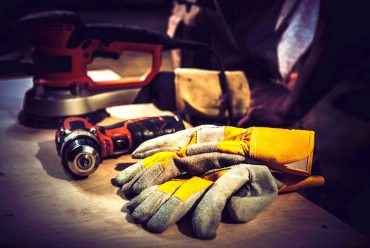 It’s exciting to think about a remodeling project and all the fun things you will do. And while safety is not something that most people would say is unimportant, you’d be surprised at how many ways safety can become an issue.
It’s exciting to think about a remodeling project and all the fun things you will do. And while safety is not something that most people would say is unimportant, you’d be surprised at how many ways safety can become an issue.
A first step is permitting. Simple enough, but many people often see building permits as a waste of money. Permits, however, are important for helping ensure safety.
Building, electrical and mechanical permits can all be part of any remodel, even though only some may apply to your specific project. Check with your local jurisdiction to see what’s required.
Use professional and skilled trades. Sure, lots of folks can wire a house or do some plumbing, but having it pass muster and be safe is really key.
Faulty wiring can be disastrous, if not deadly. Make sure your tradespeople have adequate certifications (where applicable). Professional tradespeople know current codes and will make sure you have the appropriate detectors, scald-proof valves and other items that can protect your family.
Electrical updates to wiring are not super snazzy, and you don’t always “see” the result, but wiring is a major safety concern, so if you have any electrical oddities or quirks, have them fully investigated by a licensed electrician and make any needed corrections.
You also want to be sure that you have functioning smoke detectors (preferably hard wired and with a battery backup) in all bedrooms and a living area, along with CO2 detectors if you have any gas appliances. These items really top the safety must-haves!
Does your family have any special needs? Health or mobility issues, aging-in-place needs? There are lots of ways you can make your environment safer for a variety of needs.
Backing for grab bars near toilets, in showers and tubs can be installed right away or as you need them. Eliminating multilevel floors (that old sunken living room that was so chic in the ’70s and ’80s) and using universal design can create spaces that are easy to use for family members of any age or ability.
As we get older, our vision changes, as does our depth perception. Multilevel homes or spaces with one step down, like the sunken living room, can create trip hazards, so level out those floors. Extra lighting is also helpful, but to avoid an operating-room feel, have it switched in multiple locations. For example, so all the kitchen “can” lights don’t come on at once. The other option is dimmers, to set the level of light you need at any given time.
Another type of safety consideration is chemical sensitivity. New construction, remodeling and the products that go along with it can have high levels of volatile organic compounds, and that off-gassing can cause everything from headaches and nausea to much more severe illness. Pay attention to products that avoid formaldehyde and those that are low-VOC in everything from floor covering to paints.
Floor coverings can present some issues, in particular hardwood floors and stairs. These are beautiful additions but can be very slick underfoot. Shoes can provide some help but if you are a “no shoes” household and wear socks or slippers, wood can be a slippery slope!
Consider any issues facing your family before you start planning, and seek input about finishes and treatments so that your new space is beautiful and safe for all.
























